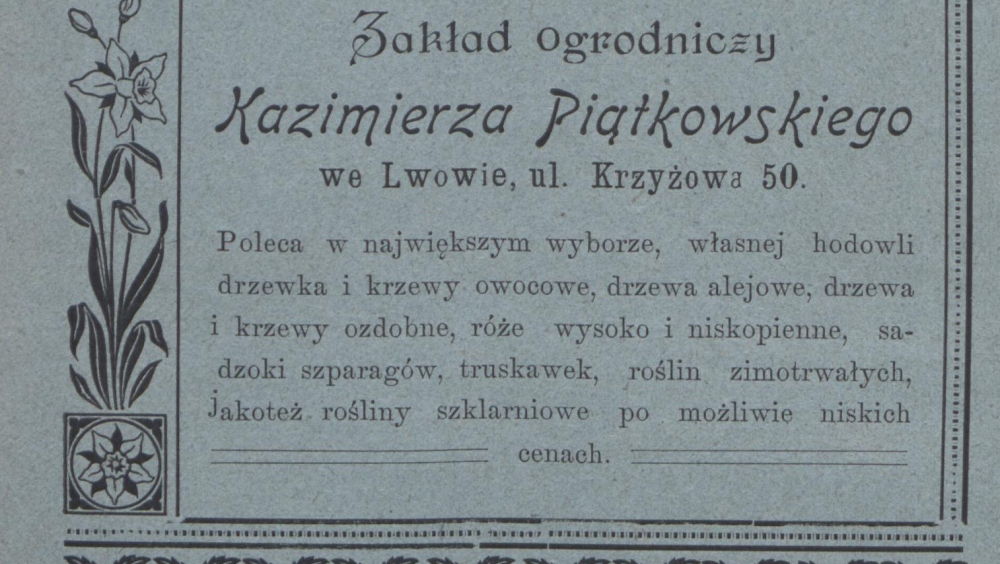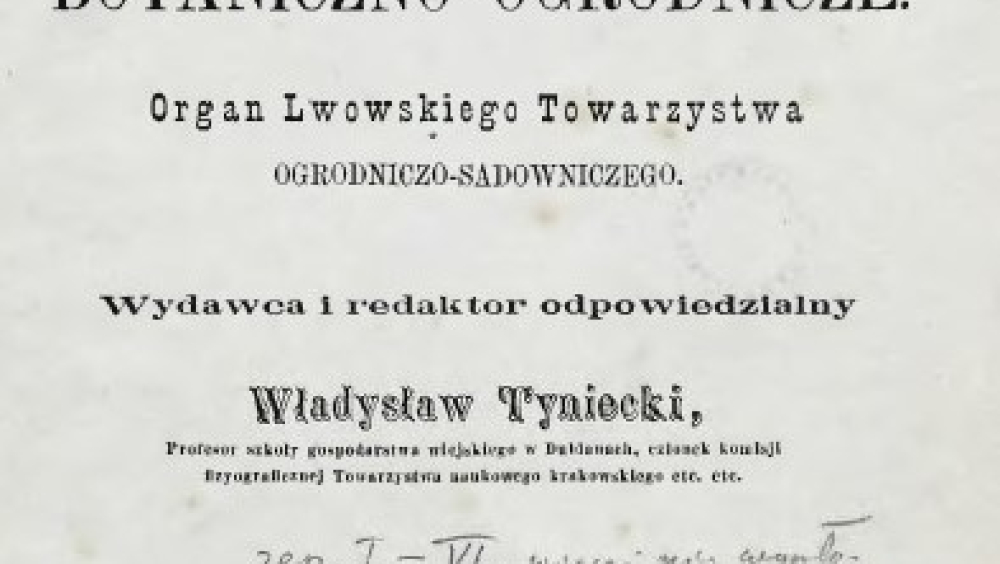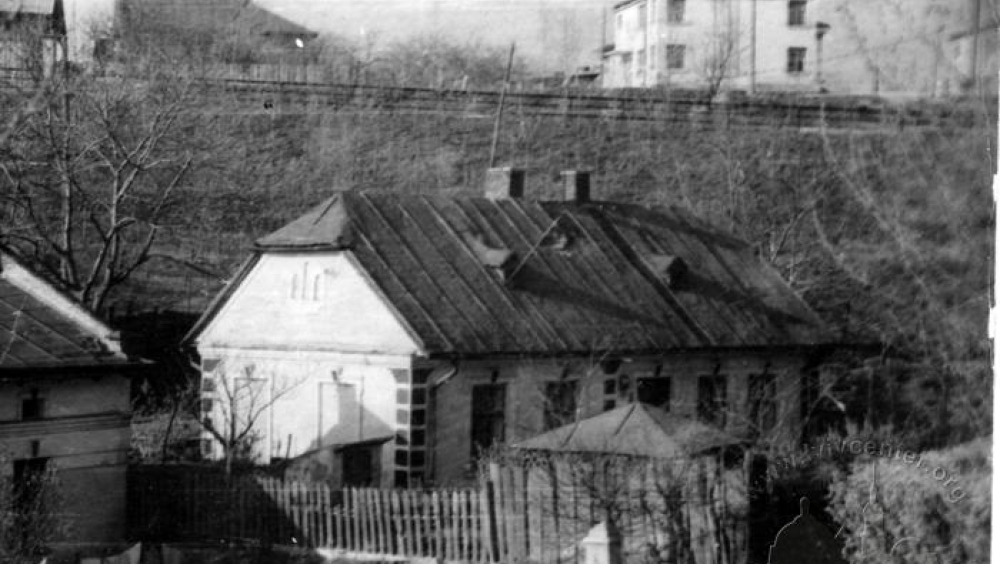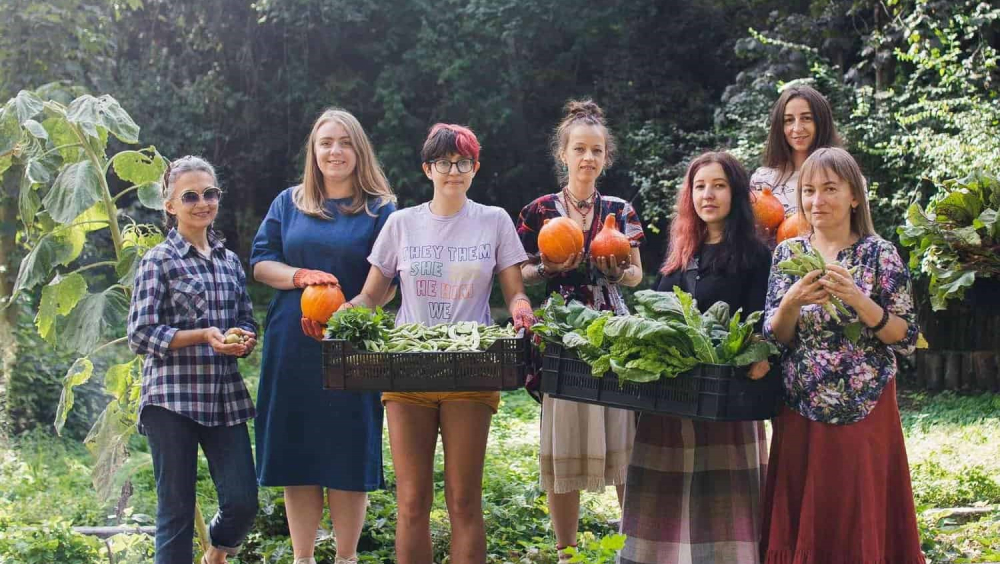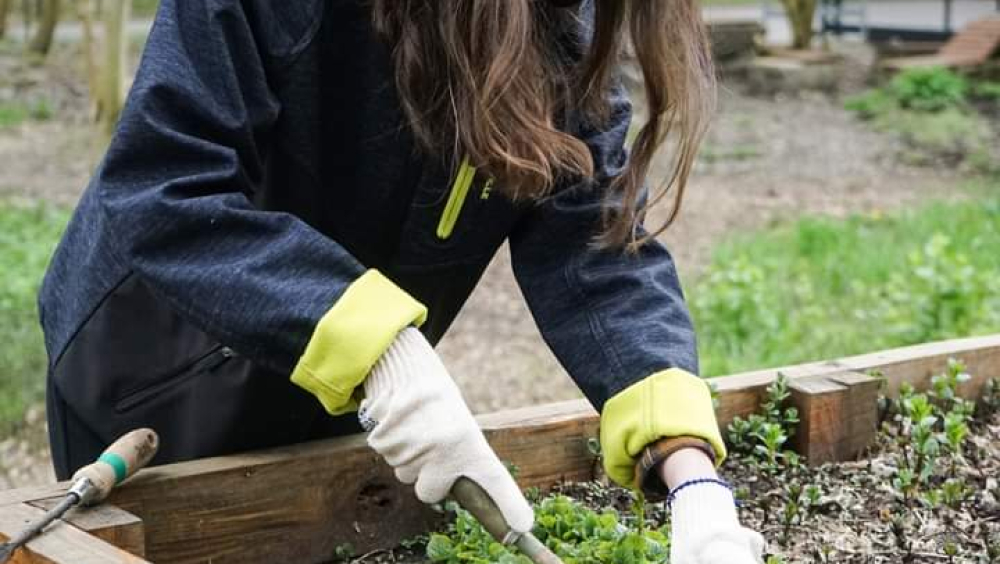Urban gardening: Harvest time in the city
What comes to mind when you hear about vegetable gardens in the city? No wonder today, urban gardening is a global trend in urbanised ecosystems with a growing number of adherents and territories.
Urban gardening has many forms: community and backyard gardens, rooftops, balcony or container gardening, right-of-ways, and market farms. These are common forms of the 21st century, but what was urban gardening like before?
It is a story about the transformation of vegetable gardening in Lviv: the forms it took in the 19th century and after World War II, and how rural culture and urbanism influenced the change in this practice.
Through the story and the project, we aim to highlight the little-known urban gardening practices of the Lviv residents based on the collective memory of generations. Together with NGO Plato, we plan to promote the idea of urban gardening as part of the city's heritage. Through modern practices, we will demonstrate the entire process of ecological farming and promote a careful attitude to resources, especially in the climate change context.
At the end of the 19th century, Lviv was the third largest city in the Austrian provinces, after Vienna and Prague. Along with the growth of its political significance, economic prosperity followed, accompanied by rapid and intense urban development.
At the turn of the 19th and 20th centuries, the concept of the Garden City, an ideal city where people live in harmony with nature, developed by the English sociologist - Ebenezer Howard, became popular in Europe. The trend towards the Garden City has not spared Lviv.
In 1870-1890, architects Julian Zakharewycz and Ivan Levynskyi began to develop the southwestern districts of Lviv, including Kastelivka. Dozens of villas have appeared here, harmoniously blended into the landscape surrounded by gardens.
Until the end of the 19th century, this district was located on the outskirts of Lviv and retained the features of a rural area. Residents of the mansions actively engaged in gardening: they planted orchards of fruit trees and flowers in the front gardens and mini-vegetable gardens on small plots of land. Commonly, they planted lettuce, spinach, cauliflower, asparagus or different herbs.
From the memoirs of the daughter of the famous Ukrainian impressionist painter - Ivan Trush, who lived in his villa, we learn that the family planted only rheum and a few annual agricultural plants for household use. Among the inhabitants of the "sleeping areas" with villas, gardening with relict trees and ornamental plants was widely spread. Vegetable gardening was in the small beds where they grew minor crops and herbs.
At the end of the 19th century, the Gardening Farm of Kazymyr Piatkovskiy (Kazimierza Piątkowskiego) existed in the Kastelivka district at 50 Kryzhowa Street. Here, locals could buy asparagus, spinach, cabbage and greenhouse plants besides fruit trees, ornamental shrubs and roses.
In the second half of the 19th century, the professional societies became more active. Since 1866, the Garden and Horticultural Society (Towarzystwo ogrodnicze i sadownicze) has existed in Lviv. The Society's activities were wide-ranging: the planting of orchards, horticultural farms, vegetable gardens and the promotion of growing new types and sorts of vegetables. The Society owned a garden on Pekarska Street. Besides the fruit trees, there were small beds for growing vegetables - tomatoes, radishes, cauliflower, asparagus, lettuce, and spinach.
In the early 1920s, the process of Lviv's growth intensified. On 1 April 1931, as a result of the inclusion of suburban settlements, Lviv's territory was significantly expanded to include Znesinnia, parts of Kryvchytsi, Kozelnyky, Kulparkiv, Syhnivka, Levandivka, Klepariv and Zamarstyniv. Vegetable gardening was a common practice for residents of suburban villages. They planted different vegetables: potatoes, tomatoes, cabbage, and herbs.
Urbanonyms also indicate that inhabitants of certain districts were engaged in gardening and horticulture. The former name of Antonovycha Street was Sadivnytska (“garden”). One of the side streets of Zamarstyniv was named Horodnytska (from the word "vegetable garden"). Hriadkova Street ("garden bed") in the Znesinnia. There are also "food places" in Lviv - Ohirkova Street ("cucumber"), in the Pidzamche.
During the Soviet occupation (1944-1991), urban gardening practices in Lviv underwent significant changes. After World War II, Lviv became a major industrial centre. The city's territorial boundaries increased. It includes the suburban settlements of Sknylivok, Sykhiv, Zboishcha, Kryvchytsi, Lysynychi, Bondarivka, Bohdanivka, Briukhovychi, Vynnyky, Rudno, Bilohorscha. New residents brought traditional elements of rural culture to Lviv.
People tried to get land plots in Lviv for vegetable gardens, set them up on lawns, and cultivated empty land around the buildings until it was forbidden.
From the memoirs of Lviv resident - Iryna Krasitska, who lives in an apartment building on Sheremety Street (Zamarstyniv neighbourhood):
"My relatives moved to Lviv in the 1950s. Here, they got a small apartment. There was an unoccupied plot of land in the yard, where they set up mini-vegetable gardens. We grew potatoes, onions, garlic, cabbage, and herbs."
Growing vegetables was, to some extent, a forced necessity provoked by the post-war crisis. It was a way of survival and an opportunity to provide an additional ration.
"Vegetable gardening was a kind of leisure time for us. We were small children, and we used to work there with our parents from morning to night. We lived cramped in a small apartment and didn't have much comfort, so physical work diversified and distracted us from such a routine."
For the rural population, vegetable gardening was a typical traditional practice, a norm of everyday life and an element of their identity. So when people moved to the city, they tried to keep these habits. Growing vegetables and being in touch with nature brought back memories from childhood.
"People from the countryside are used to the land. ... I like to work on the land, I get energy from the land, I enjoy it."
In the 90s, urban gardens were commonplace for many Ukrainians. During the unstable economic situation, this was a necessity. People grew vegetables on plots in front of apartment blocks or private households. In the 2000s, garden owners began to use the plots for construction, building garages or selling them.
The decline in the number of urban vegetable gardens is a natural process under the influence of urbanisation. The symbiosis of rural and urban is a temporary phenomenon of its time. The form of gardening in Lviv changed under the influence of social processes.
Over the past 20-30 years, the creation of urban gardens has been trending in European cities. In 2021, Lviv began transforming the space in the park into a city garden to promote nature-based solutions, permaculture and organic gardening. It is no coincidence that the Rozsadnyk was created in the Zalizna Voda park. Previously, there were beds and greenhouses on its territory (also called "Röhring's greenhouses", the famous Lviv gardener - Arnold Röhring).
The Rozsadnyk is a modern form of gardening in Lviv, an example of adaptation to new urban processes. The garden is also an urban laboratory where residents receive basic knowledge of gardening and horticulture. It's about human connections, environmentally friendly knowledge and the value - to be not only a consumer of finished products but also to grow them.
Any city, on the one hand, has its own specific identity, and on the other hand, it is part of a more general phenomenon. What we call urban lifestyles and urban culture are common to all European cities. Historically, Lviv was part of a European city network with a multicultural and multinational legacy. European trends in architecture, urban planning, and art are reflected in Lviv.
Urban gardening is a typical practice in most European cities. Through history, we want to tell the story of different forms of urban gardening in Lviv, its transformation and the dynamics of urban everyday life. This topic is little researched in academia and underrepresented in public space as part of the city's heritage.
The project involves documenting the personal stories of the garden owners, public presentations and discussions about the history of vegetable gardens in Lviv, and thematic workshops on eco-education and modern gardening methods. Doing so will have a social effect, as it will help to engage residents in preserving, promoting and rethinking heritage.
The events are focused on the active participation of young people, as Lviv is the European Youth Capital 2025, which will enhance the sense of co-creation. We plan to draw attention to the history of urban gardening through events as part of the European Heritage Days 2024, which Lviv is joining for the 14th time.
